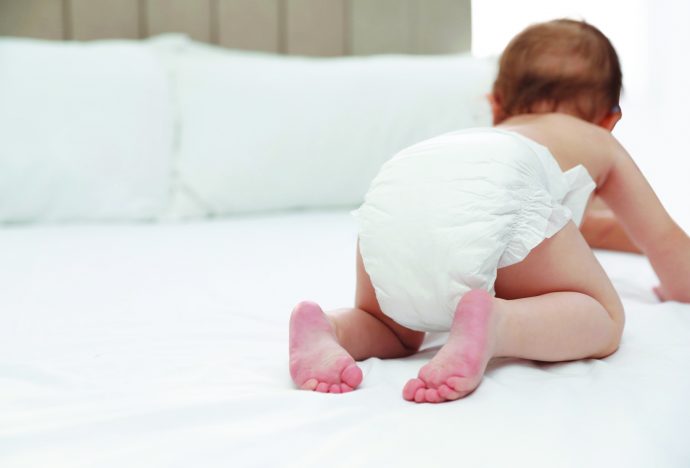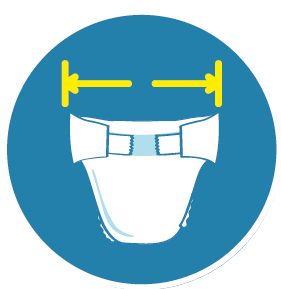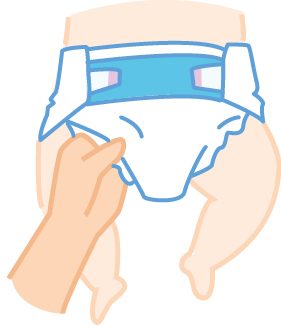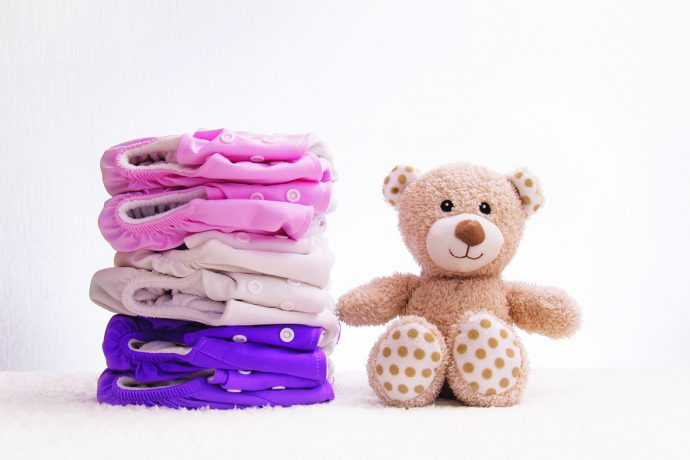When it comes to infants, diapers are an absolute necessity because they absorb and retain the child’s bodily waste. Infants and toddlers below two years of age cannot properly control their bladder and bowel movement yet, so having a diaper on usually prevents a big mess from occurring whenever the child pees or poops.
While it is simple enough to understand a diaper’s functions, buying the right one for your infant may be confusing, especially the first few times. And you’ll need lots of diapers right from the get go, as you may need to change his diapers up to nine times a day, particularly during the first three months of life.
Getting started
There are several important points to note when buying diapers:
- Buy the right size & fit. If it’s too small, it will be uncomfortable to wear and may cause rashes or chafe baby’s sensitive skin. If it’s too big, it may come off easily or leak frequently. Unfortunately, diaper sizes are not universal and can vary between brands. It’s common for diaper manufacturers to offer free samples which you can request for on their website or social media. Alternatively, buy the smallest pack available to try them out. Remember, an infant’s skin is many times more sensitive and delicate compared to an adult’s, so getting the right diaper goes a long way toward making it a comfortable fit for your little one.
- Size by weight, not age. Unlike clothing, diapers are sized according to the baby’s weight rather than age because each baby grows in size at a different rate.
- Easy on the skin. Diaper rash can be caused by many factors such as prolonged contact with pee and poo (especially diarrhoea, which can be caused by infections), or even a tight-fitting diaper. If diaper rash is a problem, you can try using a non-scented diaper instead.
- Wear it right. Putting on the diaper correctly on your baby makes a difference, e.g. the sides are aligned properly, it is not accidentally worn front to back, etc. In the case of newborns, you can opt to fold the front part of the diaper to prevent it from chafing the navel (which may still have the umbilical stump still attached) if your baby shows signs of discomfort. Diapers should fit snugly. Tight-fitted diapers may affect the blood flow to legs or press baby’s tummy. Loose ones may cause urine and stool leakage, or slide off when the baby starts to move about.
- Tape vs diaper pants. In terms of functionality (e.g. comfort, absorbency, etc.), both are similar. However, the tape diaper is usually recommended for newborns and infants up to 6 months, while the diaper pants are recommended for babies above 6 months as they are easier to pull on/off especially when baby is able to stand. If you are on the road or in a place where a baby changing room is not available, diaper pants are much simpler to use.
What about cloth diapers?
Cloth diapers are touted to be more environmentally friendly as they reduce the amount of waste going into landfills. Although using cloth diapers may cost more initially, especially if you buy the newer types of cloth diapers with pockets and inserts, in the long run they are more cost effective.
However, the downside of using cloth diapers is the increased labour involved as you will need to properly dispose of baby’s waste and also wash/clean the cloth diaper or pocket/insert. Cloth diapers may also involve a slightly higher learning curve to as you will need to practise how to fold and use them correctly, as well as how to properly wash soiled diapers.
Take your pick
Regardless of your choice of whether to use disposable or cloth diapers, you will need to master how to use diapers for your child.
If your infant develops diaper rash (which is common) but the rash persists or recurs despite using different diaper brands or after basic home treatment, then it’s best to see a doctor.
As a general guide, potty training can start around 2 years of age, but don’t get too upset if your child starts later – every child grows out of using diapers in his or her own time. Once potty training is a success, you can finally say bye-bye to diapers!
An educational contribution by Malaysian Paediatric Association.









Comments